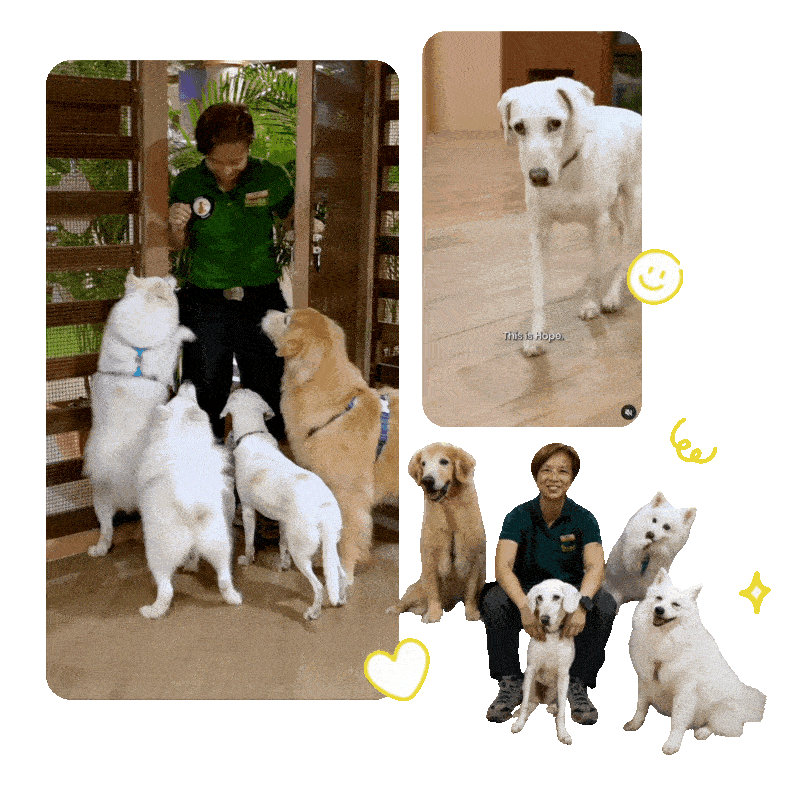Lesson 1 for Ted
Bark
Bark
Understanding & Managing Ted’s Barking
🎉 Hey Joey, welcome to Lesson 1! Let’s dive into why Ted barks and how we can help him feel calmer and more confident.
Why Does Ted Bark?
Ted is a lovable, mixed-breed boy who takes his job as the neighborhood watch commander very seriously! 🚨🐕 Whether it’s dogs passing by, strangers near his home, or even moments when nothing obvious is happening, Ted’s barking is his way of communicating.
Since his barking likely comes from a mix of excitement, frustration, and a little uncertainty, our goal is to help him feel more relaxed, confident, and in control—without feeling like he needs to announce every movement in his world.
🐶 Want to know more?
Download Ted’s full report for even deeper insights!
Simple Recommendations & Exercises to Start Today
These easy techniques fit right into your daily routine and will make a huge difference in helping Ted feel more relaxed.
Step 1: Creating a Calm Home Environment
Dogs like Ted often react to what’s happening around them — whether it’s people, animals, or unexpected noises. When his environment feels safe and predictable, he won’t feel the same urge to bark at every little change.
🎵 Mask outside sounds with calming background noise – White noise, classical music, or even a fan can help soften outdoor sounds that might set Ted off.
Try out these relaxing bits:
White Noise Sounds, Noise & Rain, Relaxing Piano Music, Lo-Fi Relaxing Music🚪 Reduce visual stimulation – If Ted loves to bark at passing dogs or strangers, try frosted window film, curtains, or moving his favorite lookout spot to a quieter location.
🛏 Find his “safe zone” – If Ted tends to bark near windows, doors, or busy areas, setting up a cozy space away from those spots can help him feel more at ease.
🦴 Keep him busy with engaging activities – A stuffed Kong (filled with peanut butter or kibble) or a long-lasting chewy treat gives him something positive to focus on, keeping his mind engaged and his barking at bay!
Paw Tip: Pay attention to when Ted barks the most — sometimes a small change (like closing a window or turning on music at the right time) can make a huge difference!
Step 2: Teach Ted to “Settle” Like a Pro
Imagine if Ted had his own little “chill zone” where he knew exactly how to relax… Sounds amazing, right? That’s what “Settle on Cue” training is all about! Giving Ted a specific place to relax teaches him what to do instead of barking. With practice, he’ll learn to stay calm on his own — even when exciting things are happening!
📅 Practice: 3-5 times per week | 5-10 min per session
🕒 Best times: When Ted is already calm, or just before/after known barking triggers (like the doorbell)
Step-by-Step Training Guide:
Pick a Spot – Choose a comfy mat or bed where Ted can relax.
Encourage Him to Settle – Lead him to the spot and reward him when he sits or lies down.
Reward Calm Behavior – Give him treats when he stays in his spot quietly. (The longer he stays calm, the bigger the reward!)
Add a Cue Word – Say “Settle” or “Relax” as he lays down, so he starts to associate the word with chilling out.
Make It a Game! – Once he’s got the basics down, challenge him by adding small distractions (like a soft knock on the door). Reward him for staying put!
Paw Tip: Consistency is key! The more you practice, the more automatic it becomes for Ted to settle on his own.
🌟 Did you know?
Just like us, dogs have food preferences! Discover which protein motivates your furkid the most.
You Got This! 🙌
Ted is learning that he doesn’t need to bark at everything to feel safe or heard. By creating a calm environment and reinforcing relaxation, he’ll soon feel much more confident and at ease!
🐶 Try these strategies this weekend and let us know how Ted is doing! Need extra guidance? PawPaw is here to support you! 💙
🐶 Looking for more insights?
Send us a message with a video of barking or photo/description of your environment — we’ll help you!
How Did You Like This Lesson?
We’d love to hear your thoughts! On a scale from 1 to 10, how would you rate this lesson? Your feedback helps us make each session better and more helpful for you
🔜 What’s Next?
In Lesson 2, we’ll build on these skills and show you how to manage barking during walks, guest visits, and exciting moments. You’re already on the right track — keep up the great work! 🎉



